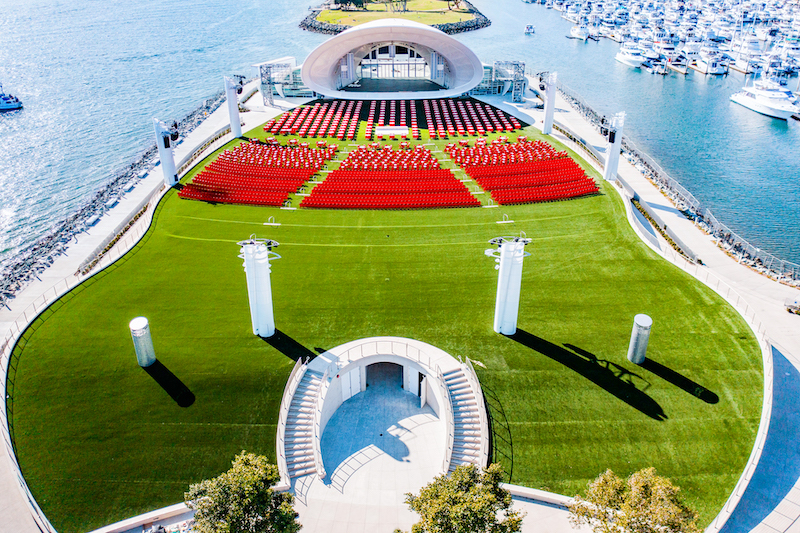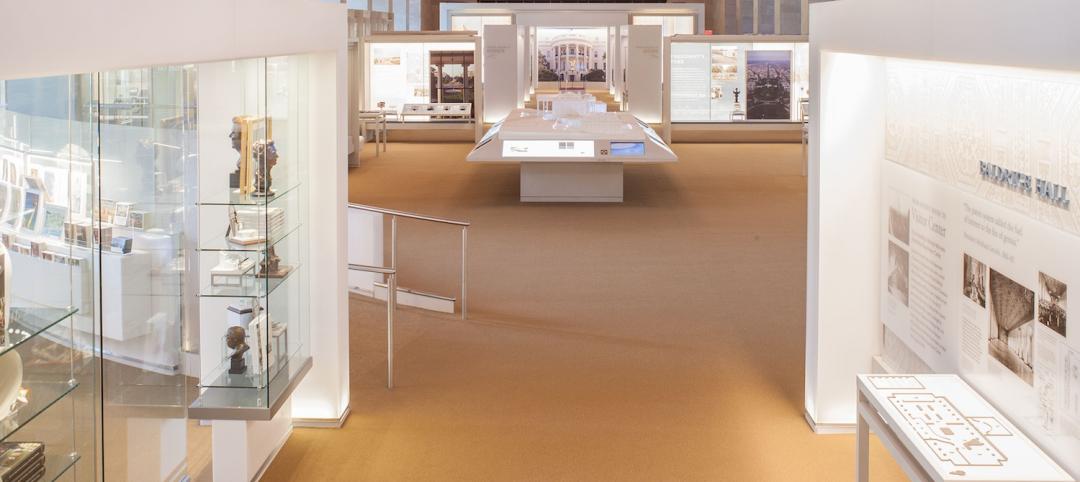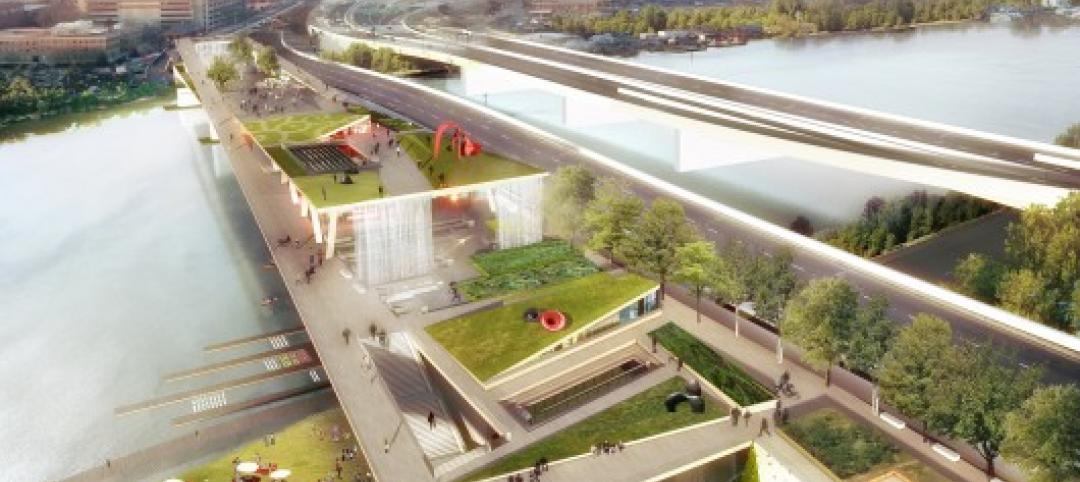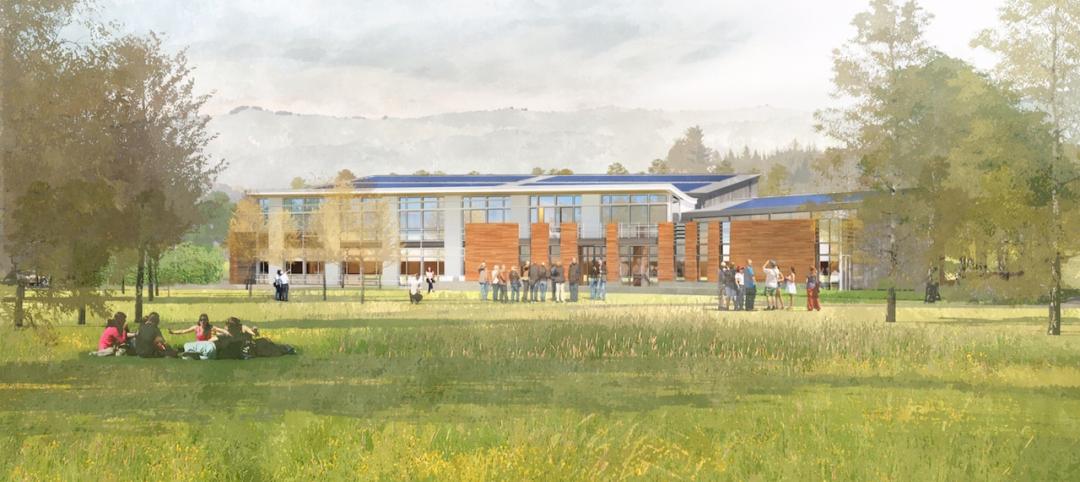This weekend, after a 13-month COVID related delay, the Rady Shell at Jacobs Park, developed and managed by the San Diego Symphony, officially opens on 3.7 acres of the city’s downtown Embarcadero district.
The $85 million Rady Shell at Jacobs Park, designed by the project’s Lead Architect and AOR Tucker Sadler Architects, is the first permanent venue for the Symphony’s schedule of outdoor classical concerts. It aspires to be the same kind of draw as the Hollywood Bowl in Los Angeles, the nation’s only other year-round outdoor concert venue operated by an orchestra.
The park is accessible to the public for free 85% of the year, as the Symphony spent $3 million to rebuild and upgrade the adjacent basketball courts and outdoor athletic equipment at Embarcadero Marina Park South. It added 34 donor benches, which are illuminated at night and were built around the venue’s perimeter and along the promenade between the venue and the San Diego Convention Center.
AN INTERNATIONAL BUILDING TEAM

The Rady Shell is amplified by an on-stage sound system as well as a second system at each side of the stage and behind the audience.
With its flexible seating capacity of 10,000 within a 1.25-acre audience area, Rady Shell at Jacobs Park features walkways, open-air dining pavilions, and recreational facilities. The Shell itself showcases a 4,800-sf stage wrapped in a 33,000-sf canopy provided by Australia-based Fabritecture. U.K.-based Soundforms, with architects from Flanagan Lawrence, Expedition Engineers, and ES Global, designed the Performance Shell, expanding and adapting the concept to accommodate a large orchestra, chorus, and soloists. (The Rady Shell in San Diego is 57 ft high and 82 ft wide.) Tucker Sadler was responsible for the overall design of the venue at Jacobs Park, including backstage artist support, three professional kitchens, underground restrooms, the seating area, and the public park that offers views of San Diego Bay and the city's skyline.
The Rady Shell uses two acoustical systems designed by Salter in consultation with sound designer Shawn Murphy: an on-stage Meyer Constellation Acoustic system, and an L-Acoustics system that projects sound from six towers three on each side of the stage. JRLX and theater consultant Schuler Shook designed the venue’s lighting, and Solotech provided the audio-visual elements. An LED lighting system developed by Horton Lees Brogdon Lighting Design illuminates the exterior canopy.
PHILANTHROPIC OUTPOURING
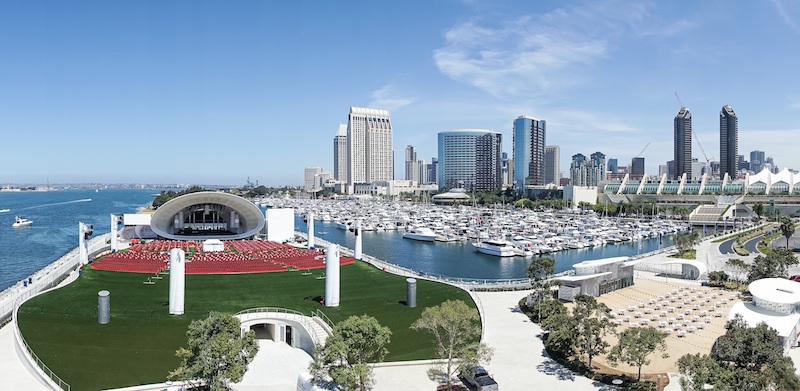
The venue provides views of this city and its waterfront. Image: Sal Villanueva, Tucker Sadler Architects
Nearly all of the money raised to fund this project came from private donors including Qualcomm’s founder Irwin Jacobs, who proposed the idea for an outdoor concert space two decades ago, according to the San Diego Union Tribune. Rady Shell also brings the Symphony—which was founded in 1910 but in 1996 was forced to liquidate its assets under Chapter 7 of the U.S. Bankruptcy Code—full circle.
The Rady Shell at Jacobs Park is designed to host more than 100 concerts and events year-round.
Other members of this project’s Building Team include Gardiner & Theobald (project manager), Coffman Engineers (SE), and Burton Studios (landscape architect).
Related Stories
| Oct 20, 2014
UK's best new building: Everyman Theatre wins RIBA Stirling Prize 2014
The new Everyman Theatre in Liverpool by Haworth Tompkins has won the coveted RIBA Stirling Prize 2014 for the best building of the year. Now in its 19th year, the RIBA Stirling Prize is the UK’s most prestigious architecture prize.
Sponsored | | Oct 19, 2014
The Exploration Tower in Port Canaveral dazzles visitors
With a mission to provide the experience of a lifetime, the Exploration Tower at Port Canaveral, Fla., is designed to inspire, as visitors learn about the history and nature of the port and beyond. SPONSORED CONTENT
| Oct 19, 2014
White House Visitor Center reopens in Washington, D.C.
Designed by SmithGroupJJR and Gallagher & Associates, renovated center shows public its unique role as office, stage, museum, park, and home.
| Oct 17, 2014
OMA, OLIN design unanimously chosen for D.C. elevated park
In the design, the ends of the bridge are pulled upward to form an "X" shape. It allows ample room for add-ons such as a cafe and performance space, in addition to open space for plazas, lawns, and urban agriculture plots.
| Oct 16, 2014
Perkins+Will white paper examines alternatives to flame retardant building materials
The white paper includes a list of 193 flame retardants, including 29 discovered in building and household products, 50 found in the indoor environment, and 33 in human blood, milk, and tissues.
| Oct 16, 2014
Rocky Mountain Institute breaks ground on net-zero Innovation Center
Encompassing the Rocky Mountain Institute’s 32 years of innovation, the new 15,610 square-foot facility will exhibit the principles of integrative design and energy and resource efficiency.
| Oct 15, 2014
Harvard launches ‘design-centric’ center for green buildings and cities
The impetus behind Harvard's Center for Green Buildings and Cities is what the design school’s dean, Mohsen Mostafavi, describes as a “rapidly urbanizing global economy,” in which cities are building new structures “on a massive scale.”
| Oct 15, 2014
First look: Blueprint revealed for proposed High Line project in Queens
Yet another High Line-esque project has been proposed, this time in Queens. A blueprint has been developed for a 3.5-mile stretch of abandoned railroad tracks, which would connect Rego Park to Ozone Park with a walkway and bike path.
| Oct 14, 2014
Proven 6-step approach to treating historic windows
This course provides step-by-step prescriptive advice to architects, engineers, and contractors on when it makes sense to repair or rehabilitate existing windows, and when they should advise their building owner clients to consider replacement.
| Oct 12, 2014
AIA 2030 commitment: Five years on, are we any closer to net-zero?
This year marks the fifth anniversary of the American Institute of Architects’ effort to have architecture firms voluntarily pledge net-zero energy design for all their buildings by 2030.


